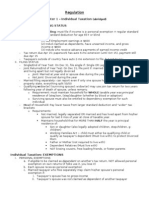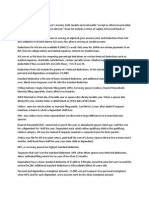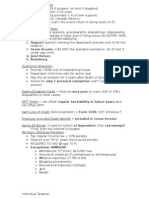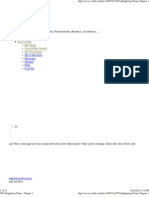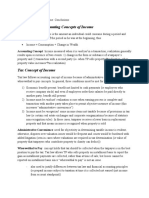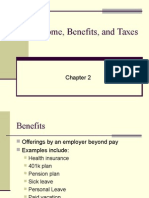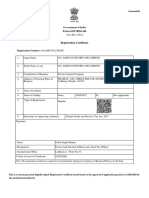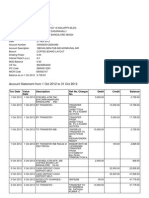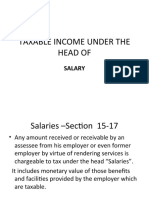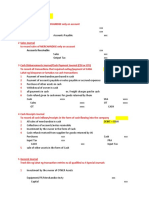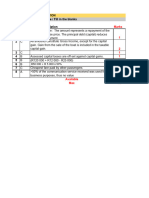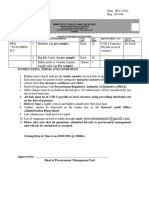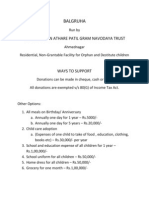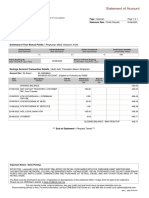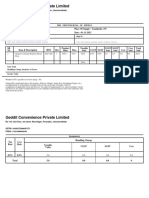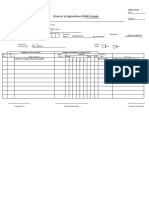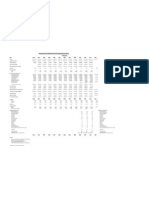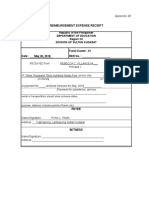Individual Taxation Filing Status
Due date April 15th An extension is only for filing your paperwork and not your payments, so with an extension the due date for tax payments remains April 15th Determine filing status based on status as of December 31st . If one spouse dies during the year, a joint return may still be filed Can file as a qualifying widower for two years after spouses death, if they dont remarry The surviving spouse must maintain a household that for the whole entire taxable year was the principal place of abode of a son/daughter, stepson/step daughter (either by blood or adoption) Head of household individual maintains a household that for more than half the taxable year is the principal r residence of dependents: S Son or daughter Working families act child must either be a qualifying child or qualify as the taxpayers dependent F Father or mother not required to live with, nursing home Dependent relatives must live with, not free loading friends
Individual Taxation Exemptions
Generally, an individual is entitled to a personal exemption that is indexed annually for inflation, $3,300 Persons eligible to be claimed as dependents on anothers tax return will not be allowed a personal exemption on their own return. If the folks claim you, you lose it. Each spouse receives a personal exemption Spouse as personal exemption on a separate return a married taxpayer, who files separately, may claim his or her spouses personal exemption if both of the following tests are met: 1.the taxpayers spouse has no gross income 2.the taxpayers spouse was not claimed as a dependent by another taxpayer If a person is born or dies during the year, he or she is entitled to a personal exemption for the entire year. Exemptions are not prorated Dependency exemptions qualifying child or qualifying relative Qualifying child CARES Close relative direct descendant, legally adopted, foster child l Age limit Under 19 (24 if full time student), no age limit for permanently disabled g Residency requirements same household as taxpayer for more than half of the tax year e Eliminate gross income test the gross income test (SUPORT) does not apply P Support test changes child did not contribute more than half of his/her support Qualifying relative SUPORT, could be free loading friend Support over 50% of the persons needs - if two or more people support more than 50%, only one can claim the dependent (must contribute more than 10%) Under exemption amount ($3,300) of taxable gross income test (no income test if meet age limit, CARES) R Precludes dependent filing joint tax return test, cant claim dependent if they file jointly with someone else r Only citizens (residents of U.S/Canada or Mexico) test
�REG - Notes Chapter 1http://www.cpa-cfa.org
Relative test, or Taxpayer lives with individual for whole year test, if not related, (foster kids and cousins fall here) No additional exemption for being Over 65 Blind Its an increased standard deduction Phaseout of personal and dependency exemptions by 2% of each $2,500 increment (1,250 for married) by which AGI exceeds certain thresholds based on filing status R1-15 (threshold amounts and example) Event TaxableNon-taxable == Individual Taxation FMV N-0-N-E I Income Gross Income FMV NBV Basis P Property the FMV of all property received is included in GI C Cancellation of debt Realization = real world Recognition = record for tax purposes Life insurance premiums above the first $50,000 of coverage is TI to the recipient - interest income from life insurance proceeds on a deferred payout is fully taxable Specific items of income excludable (Accident, medical P Premium insurance payments made by employer are and exclusions - Money and health insurance) E Employer payment of employees educational expenses (up to 5,250) are excluded from TI Payments made by employer in a qualified pension, profit-sharing and stock bonus plan are excluded - Benefit received from such plans are taxable T Taxable interest F Federal and corporate bonds P Premiums received for opening a savings account (prizes and awards) are included at FMV Interest paid by federal or state govts for late payment of tax refunds T Tax-exempt interest (reportable but not taxable) S State and local govt bond interest S Series EE savings bonds interest (for higher educational expenses), there is a phaseout Net unearned income (dividends, interest, rents, royalties) of a dependent child under 18 is taxed at the parents tax rate, Kiddie Tax D Dividend Income C Cash and property = FMV is TI Special lower tax rate 15% or 5% for the very poor (10%/15% income brackets) qualifying dividends, stock must be h held for 60 days during the 120 day period, beginning 60 days before the ex-dividend date Capital gain distribution
�T Tax-free distributions R Return of capital S Stock splits S Stock dividend Life insurance dividend Used itemized deductions in prior year = taxable income Used standard deduction in prior year (1040 EZ) = non taxable income A Alimony/Spousal support (income to the person receiving it) P Payments must be legally required pursuant to a written divorce P Payments must be in cash/cash equivalent Payments cannot extend beyond the death of the payee-spouse C Child support N Non-taxable to receiving ex-spouse N Non-deductible by the spouse making the payments If spouse is required to make both alimony and child support payments, but falls short, the money paid will be allocated first to child support P Property Settlements N Non-taxable to receiving ex-spouse Non-deductible by the spouse making the payments Net income from self employment is computed on schedule C Income from farming activities is computed on schedule F Gross Income = Cash + Property at FMV + Cancellation of debt Business Expenses need to be incurred and paid for t to be tax deductible for a cash basis payer C COGS, salaries, etc S State and local business taxes paid E Employee benefits B Business meals and entertainment expenses at 50% I Interest expense on business loans Bad debts actually written off for accrual basis tax payer (direct write off method) N Non-deductible expenses (on schedule C) S Salaries paid to the sole proprietor (they are considered a draw) F Federal income tax P Personal expenses Bad debt expense of a cash basis tax payer T There are two taxes on net taxable income I Income tax, and Federal self employment tax A business with a loss may deduct the loss against other sources of income 2 2-year carry back 2 20-year carry forward C Capitalize DM, DL and Mfg OH, then expense when sold Period expenses SG&A and R&D Uniform Capitalization rules for inventory, even a sole proprietor will be required to Gains and losses on disposition of property Amount realized adjusted basis of asset = g/l Traditional IRA
� Taxed as ordinary income when withdrawn at 59 1/2 10% additional penalty tax if withdraw early E Exceptions to penalty rule 1st time home buyer $10,000 max M Medical insurance M Medical expenses in excess of 7.5% of AGI P Permanent disability H Higher education Death Annuities treat like depreciation S Schedule E is used to calculate passive income from R Rental real estate R Royalties P/S, Estates, Trusts (from schedule K-1) P Passive activity losses (PALs) can only be deducted to extent of passive activity income U Unlimited carryforward If sell asset and losses unused, losses become fully tax deductible in the year the property is disposed P PAL exceptions Taxpayers may deduct up to $25,000 per year of net passive losses attributable to rental real estate annually if the i individuals actively participate (Mom and Pop exception) Phase out the 25,000 allowance is reduced 50% of excess of AGI over $100,000 and eliminated when AGI exceeds $150,000 Unemployment compensation must include in gross income the full amount received S Social security income L Low income (below S $25,000/ MFJ $32,000) no social security benefits are taxable Upper income (above S $34,000/ MFJ $44,000) 85% of social security are taxable T Taxable Misc Income F FMV of prizes and awards is TI G Gambling winnings is TI Gambling losses may be deducted to the extent of gambling winnings. (can be an itemized deduction but are not s subject to the 2% of AGI limitation on misc itemized deductions Taxable is used for room and board or services are required to get scholarship Partially Taxable Misc Items Scholarships and fellowship grants are excludable only on amounts spent of tuition, books and supplies N Non-taxable Misc Items L Life insurance proceeds G Gifts and inheritances M Medicare benefits W Workers compensation for personal injury or sickness P Personal (physical) injury award Accident insurance proceeds (if premiums were paid by taxpayer)
�Individual Taxation Capital Gains and Losses
Real property items permanently affixed to the land (land, building, paving, etc) Personal property all property not classified as real property (machinery and equipment) N Non-capital assets I Inventory held for sale in the ordinary course of business D Depreciable personal property and real estate used in trade or business (Section 1231, 1245, 1250) A A/R received in trade or business M Music copyrights Treasury stock Amount realized Adjusted basis of asset sold = gain/loss A Amount realized C Cash received (boot) C Cancellation of debt (boot) P Property received at FMV S Services received at FMV Reduce amount realized by any selling expenses (like brokers commissions) Adjusted basis of asset sold Purchased property basis = cost increase basis for capital improvements reduce basis for accumulated depreciation (= NBV) Gift property basis = donors basis - exception: if at the date of gift, the FMV is lower than the NBV, the basis will depend on the future selling price Sell higher use donors basis to calculate gain Donors basis ------------------------Sell between no gain or loss Lower FMV at date of gift --------Sell lower use lower FMV at date of gift to calculate loss Only go to this crazy exception when the FMV of the gift is less than the donors basis The recipient of the gift normally assumes the donors holding period I Inherited property basis A At date of death, the FMV becomes the basis for the new individual Alternate valuation date if validly elected, the asset is valued at FMV at the earlier of: Distribution date of asset Alternate valuation date (earlier of 6 months after death or date of distribution/sale 6 months max) A gain is not taxed if the tax payer can HIDEIT Gain to the extent of boot is taxable
�Homeowners Exclusion sale of primary residence S $250,000/ MFJ $500,000 o M Must have used the home as principal residence for 2 years during a five year period F For joint returns, both spouses have to meet the ownership requirement N No age requirement N No rollover to another house required The exclusion is renewable Involuntary Conversions insurance proceeds from destruction, theft, condemnation Must use proceeds to replace property lost 2 years from year end for personal property 3 years from year end for business property Divorced Property Settlement Exchange of Like-Kind Business/Investment Assets (tangible) Like kind exchange of property used in the trade or business or held for investment not inventory, stock securities, P/S interests, real property in different countries There is a gain recognized when boot is received Installement Sale n R Recognize when cash is received G Gross profit = Sale COGS G Gross Proft % = Gross profit/ Sales price Earned Revenue = Gross profit % * cash collections Treasury and Capital stock transactions (by corporation) Sale, repurchase and reissuing of stock are exempt from gains Non-deductible losses WRaP these losses up because they are non-deductible Wash Sale Loss A security is sold for a loss and is repurchases within 30 days before or after the sale date Related Party Transactions e E Entities that are more than 50% owned by individuals, corporations, trusts or P/S C Capital losses on disallowed on most related party transactions even if they were made at an arms-length FMV price Basis rules are the same as Gift rules And Personal Losses no deduction is allowed for the loss on a non-business disposal or loss I Individual capital gain/loss rules L Long term held for more than a year and receive 15% tax rate (5% if in 10% or 15% income bracket) S Short tem held for less than a year, treated as ordinary income $ $3000 maximum deduction Excess net capital loss can be carryforwarded for unlimited time, no carryback
�REG - Notes Chapter 1http://www.cpa-cfa.org
C Corporation Capital gain/loss rules (applies to C Corps only) N No special tax rate for long term capital gains. Lumped with short term as ordinary income Cant deduct any capital losses from ordinary income C Excess Net capital losses are carried back 3 years and forward 5lossesCorp capital losses Operating lossesIndv capital years Offset income yes $3,000 no Carryback 2 yrs no 3 yrs Carry forward 20 yrs Forever 5 yrs


